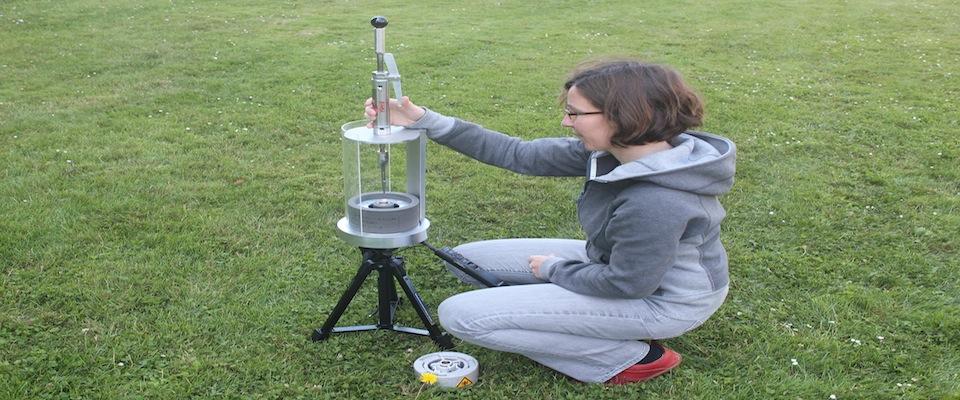Berkeley scientists take flash-freezing on the road.
Postdoctoral Earth and planetary science researcher Birgit Luef strides through the cramped labs deep in the bowels of campus’s Donner Lab. She’s making for a handy new device she helped develop—something called a “portable cryo-plunger”—a slender cylinder sitting on one of the tables. On this particular day the most exotic locale the contraption will visit is a second-story courtyard at Donner, but the cryo-plunger makes it possible for scientists to bring home better samples from even the most remote field sites.
When scientists want to study microorganisms living in liquid, they often use an imaging process known as cryogenic transmission electron microscopy. This process requires that samples be plunged in liquid ethane and stored in liquid nitrogen before going under the microscope. The stationary plungers, which Luef says cost $50,000 to $60,000, can be used to create thinner, more precise samples for researchers looking at, say, individual proteins in cells.
But “We don’t really need all that,” she says. The samples she takes are thicker, and she doesn’t need them to be so accurate. Instead, Luef says, it is more important to preserve whole cells before they have a chance to change in transit.
Thus a team of Berkeley researchers, led by Lawrence Berkeley National Lab Life Sciences Division researcher Luis Comolli, built a backpack-friendly prototype, which was tested at Lake Tyrrell in Australia a couple of years ago.
The portable cryo-plunger looks vaguely like a giant French press and works more like a microscopic dunk tank than something you’d use to unclog your toilet. It’s made of light materials, including “yoga block” foam, and can be mounted on a camera tripod. Furthermore, it costs only about $5,000.
Since the portable plunger made its debut, it has been instrumental in characterizing at least one new organism found in samples of biofilm taken from an acid mine in Redding. And in samples from a Department of Energy uranium mine-tailing site in Rifle, Colorado, Luef says, she may have a lead of her own.
“I’m still working—there’s nothing published,” she says excitedly.
And though it took some practice to perfect her plunging technique, Luef now says, as she sits in the sunny courtyard with the cryo-plunger by her side: “To be honest, I even use it in the lab.”



















